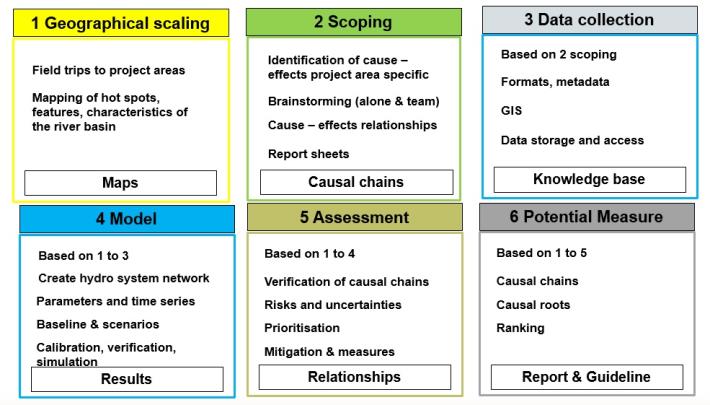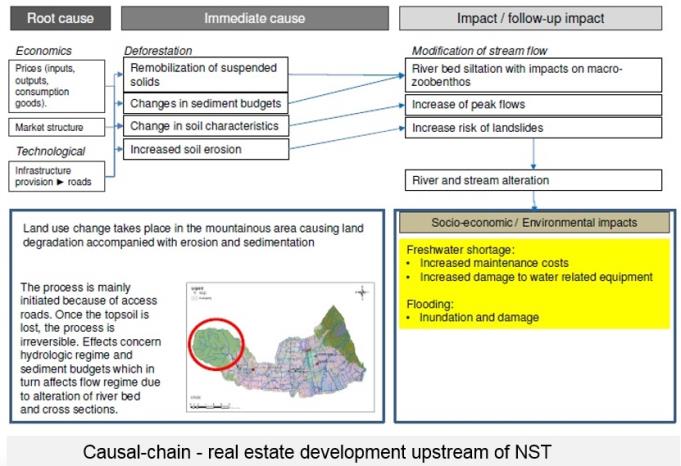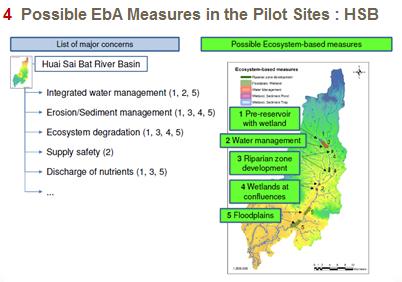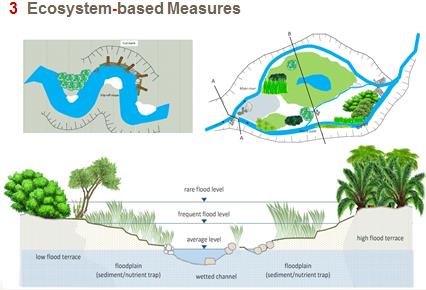




The vulnerability assessment approach allows to find the biggest problems in river basins. For this assessment the approach was based on GIWA (Global International Water Assessment Methodology) & HSAP (Hydropower Sustainability Assessment Protocol) and follows a 6 step approach including the following: 1) geographical scaling (mapping of hot spots) defines the geographic boundaries of the pilot areas to be analysed; sub-regions are identified within each project area and major hydro system features and economic activities are mapped out; 2) scoping by assessing environmental and socio-economic impacts and establishing priorities among the major concerns and issues as well as tracing the root causative factors behind the selected concerns and issues; 3) data collection; 4) modeling for verification and quantification of root-cause relationships with either physically deterministic or conceptual models covering a) hydrologic modeling with TalsimNG software, b) erosion and sedimentation modeling with Modified Uniform Soil Loss Equation (MUSLE), c) water quality modeling with GISMO software; 5) assessment to identify risks and uncertainties and to prioritize vulnerabilities; 6) Identification and ranking of potential EbA measures.
Available datasets (e.g. GIS) on digital elevation models and time series for water discharge, precipitation, temperature, humidity, evapotranspiration. Cooperation of local stakeholders to ensure that they are part of the decisions making processes and that their prioritized problems are tackled.
- Different data, discharge, evaporation, humidity, temperature, etc., is owned by different institutions. Some of them do not share their data as they consider it a loss of power. This needs to be considered as early as possible. The project used drones for collect additional data on the river discharge. - Datasets were partly incomplete. The missing information does not allow to analyze and quantify certain effects, therefore the results of the assessments still include uncertainties.